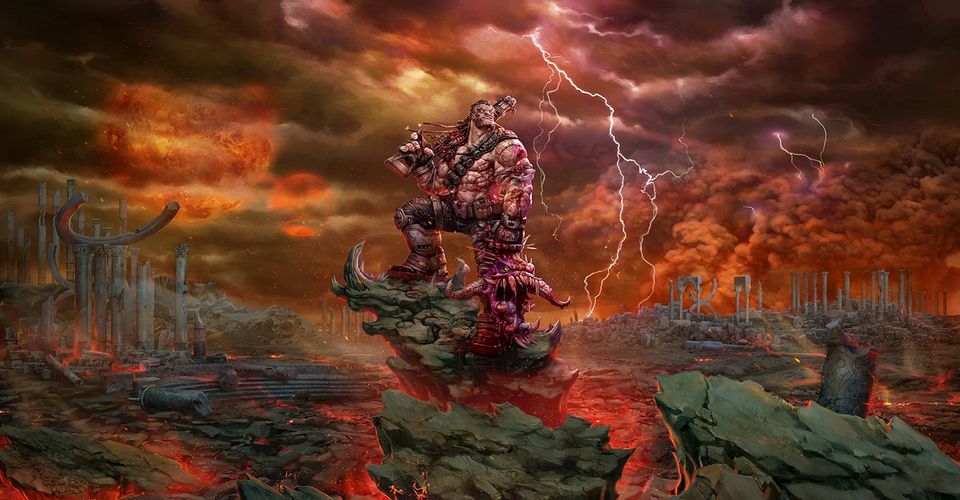Hellbound Review: A Doomed Clone Of 90s Greats

The first weapon players receive in Saibot Studios’ retro-minded first-person shooter Hellbound is an AK-47. It may have flaming vents on its side and a hellish color scheme, but there’s no mistaking it. Not only is this not the type of weapon someone might expect from a game purported to be “inspired by the 90s classics,” it even has aim down sights. Anyone who has survived the Hollywood Holocaust and blown up the Icon of Sin knows how little this Call of Duty-style zoom fits in with a high octane retro shooter. That’s just one of the ways that Hellbound comes up short in recreating the magic of the genre.
Purposefully light on story, Hellbound‘s main character (called Hellgore) is a resident of the fiery below revived by humans in order to ward off a demon invasion. Said demons initially include the usual suspects. There are zombie soldiers, spindly imps that shoots fireballs, and a second breed of zombie soldier that carries a bludgeon. Hellgore speaks in a deep baritone using all manner of profanity like it’s going out of style. Honestly, it has. The release of Duke Nukem Forever a decade ago proved that most gamers need more than a potty-mouthed catchphrase machine to infuse a game with a personality, but Hellbound is forging ahead regardless.
In the grand scheme of things, none of that matters much. What’s really important is the gameplay, and Hellbound doesn’t drop the ball too badly. While it’s isn’t going to match the best retro FPS games out there, Hellbound has swift movement and a decent shotgun, so there’s some fun to be had. The levels provide plenty of good setups for combat arenas, but they’re also filled with odd dead ends and pits of lava that can make navigation a chore.

The controls generally feel off. The movement isn’t as fast as it needs to be, leading to cases where Hellgore feels as if he’s stumbling around like a drunkard rather than stampeding through a demon horde. Precision isn’t really needed because of the decent shotgun, but it would make things better, especially since enemy AI in Hellbound are instantly locked onto the player and start charging from the moment they enter a room. There’s no chance to flank enemies, there’s no chance to scope out the scene, everyone just immediately starts running in a single file conga line towards an inevitable death via shotgun.
The biggest issue with the controls is one of exclusion. The game doesn’t support gamepads, a quirk that’s often concession to hardcore FPS players who feel that a lack of accessibility makes a game more “legitimate” or some other nonsense. The fact of the matter is that it only limits Hellbound‘s potential, since not all players can use a traditional setup, and not all situations have a mouse and keyboard available. There’s nothing in this game that can’t be duplicated on a pair of thumbsticks, so the lack of options makes it even harder to recommend.

Ultimately, Hellbound isn’t going to leave a sour taste in any player’s mouth, but that’s only because it leaves no taste at all. It’s a bland retread of a bygone era of gaming that has no understanding of why people want to return to it. Hellbound carelessly mashes up concepts and mechanics with no thought and no craft, creating an end product that’s serviceable only because of the strength of its foundation. Fighting demons with a shotgun is fun. It always was fun, and it always will be fun, and there’s nothing wrong with Hellbound‘s interpretation of that. It’s just that there are a thousand other games that do all this so much better, so it’s hard to see why anyone would pick up this particular shotgun.
Hellbound is available now on PC for $14.99, and is on sale for the first week following its launch for $11.99. A digital code for the game was provided to Screen Rant for the purposes of this review.
About The Author

















